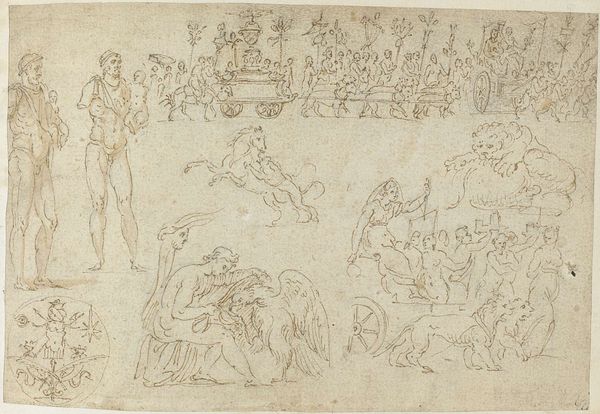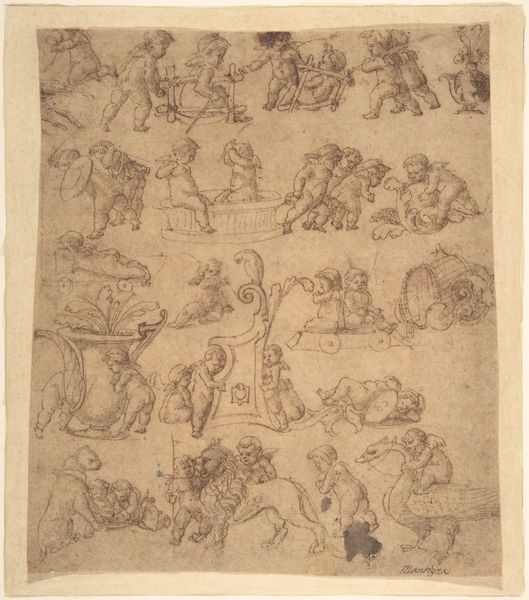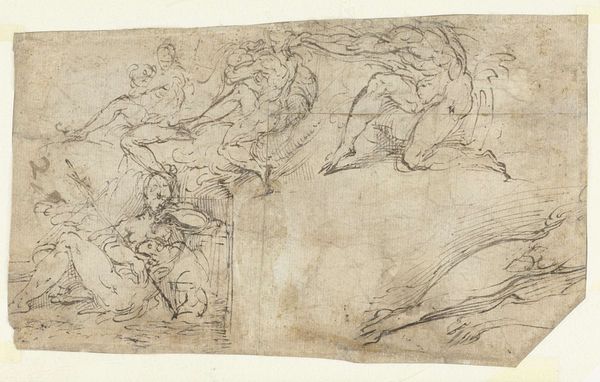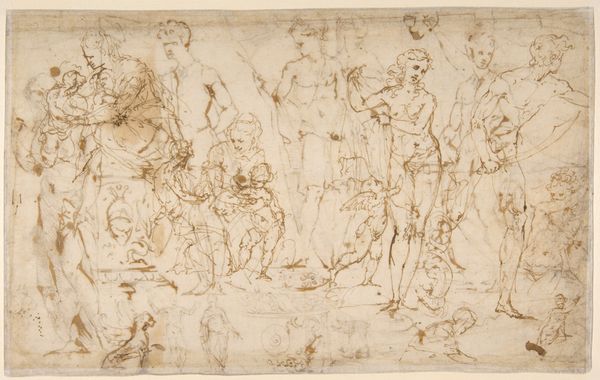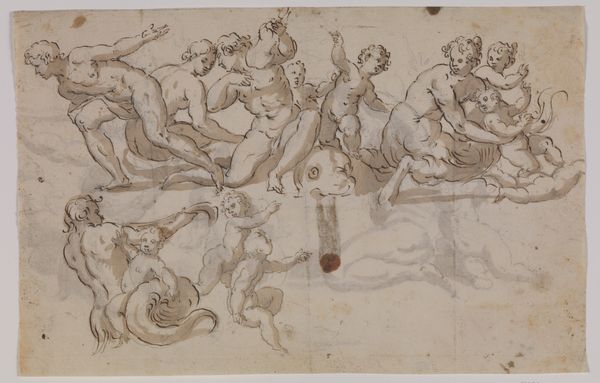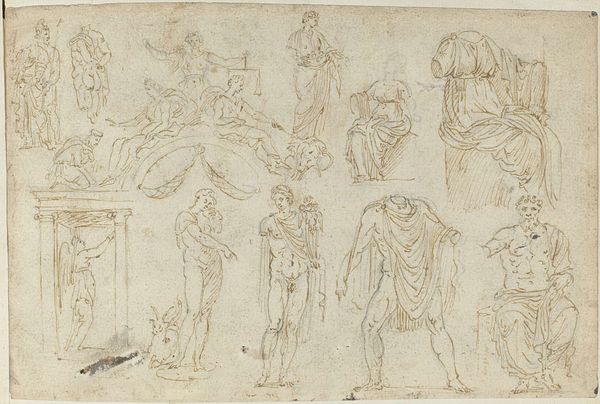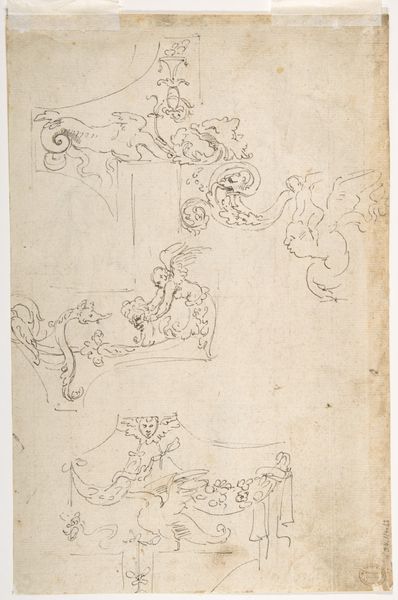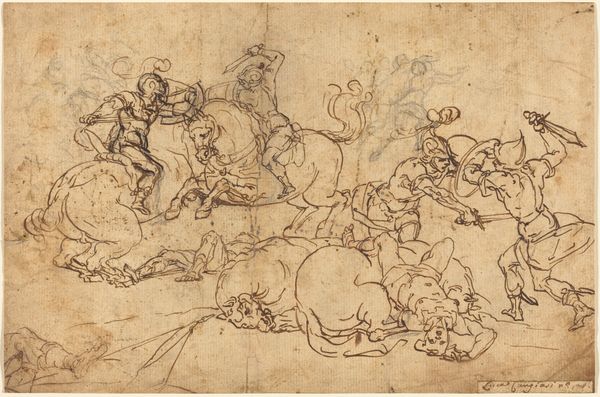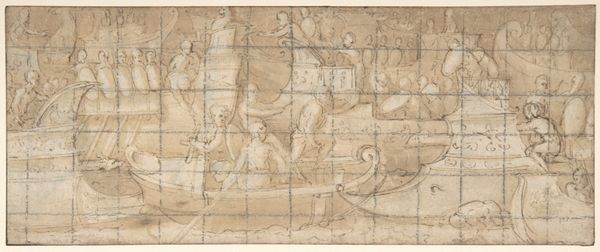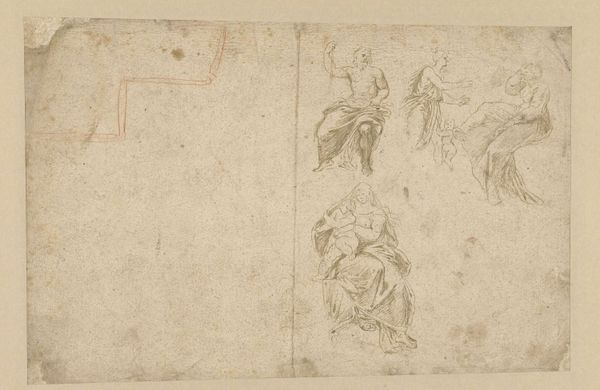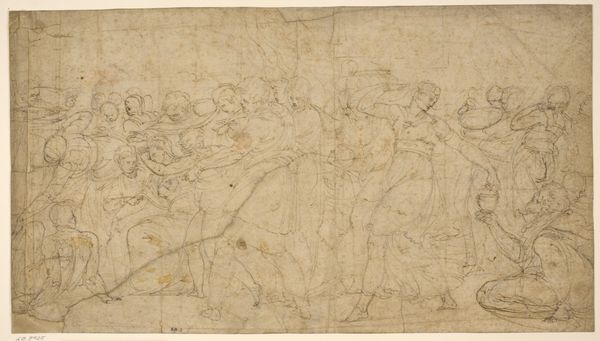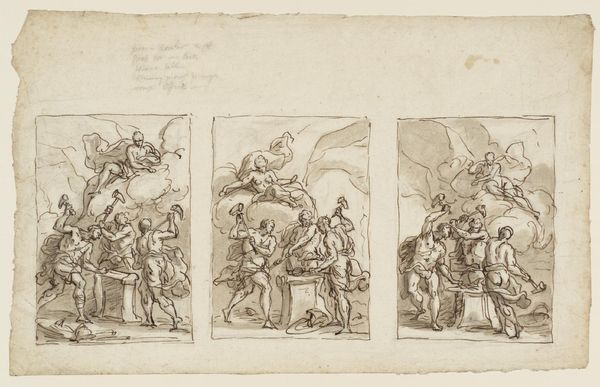
drawing, pencil
#
drawing
#
allegory
#
etching
#
figuration
#
11_renaissance
#
pencil
#
line
#
history-painting
#
academic-art
Dimensions: height 153 mm, width 225 mm
Copyright: Rijks Museum: Open Domain
Curator: Immediately, I feel a kind of intellectual lightness. Like thoughts fluttering on paper. Editor: And appropriately so, considering we're looking at "The Liberal Arts," a drawing, or perhaps an etching, from somewhere between 1550 and 1570. Each panel seems to represent a different discipline. Curator: Exactly! Grammar, Rhetoric, Music... all the gang’s here! There's even Theology chilling at the top right. It's like peeking into someone's beautifully organized—yet slightly manic— Renaissance sketchbook. All of these wonderful fields depicted together. They just dance together, you know? Editor: Well, these personifications aren't just decorative; they’re steeped in cultural and political meaning. In the 16th century, the "liberal arts" formed the bedrock of elite education, access to which was intensely policed. We’re looking at who was deemed worthy of knowledge and civic participation. Who had power, and how was that power reproduced through controlling education? Curator: Okay, I dig that. The Renaissance was messy in a lot of ways... Maybe this artist was celebrating something bigger, though— a humanistic ideal. I see a lot of striving, a hope for balance. It is so beautifully balanced too, if you look at each figure: it always feels like a nice little movement within it's own rectangle. Editor: True, this drawing exists within the Renaissance's obsession with classical antiquity, seeking to resurrect those intellectual models. That said, though, the selection and interpretation of these “arts” reinforced very specific social hierarchies. Not all knowledge was created equal, and not all people had access to it. Even as Renaissance humanism paid lip service to "universal" ideals. Curator: You bring such a solid dose of perspective to all of my dreamy takes on things! In my opinion it is a drawing that invites us into its light, rather than putting it on a pedestal. Almost like whispering at the answers to it all instead of shouting like they know everything. Editor: I appreciate how you encourage a deep engagement with these images. Maybe both perspectives invite further exploration into how the control and pursuit of knowledge has shaped culture over centuries.
Comments
No comments
Be the first to comment and join the conversation on the ultimate creative platform.
